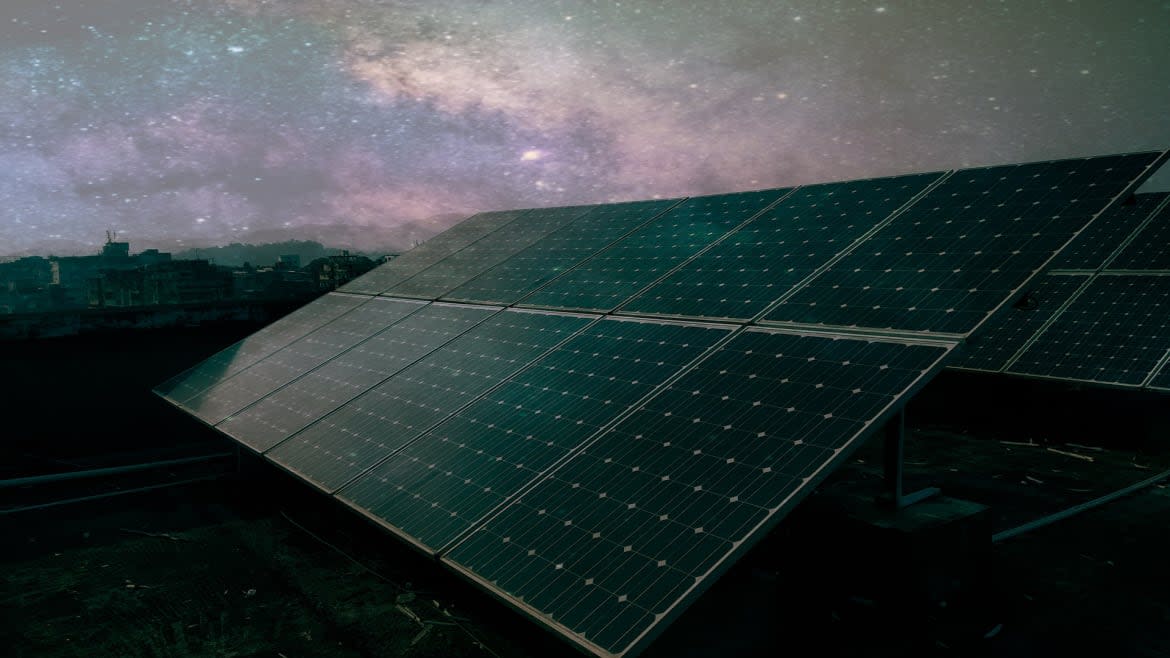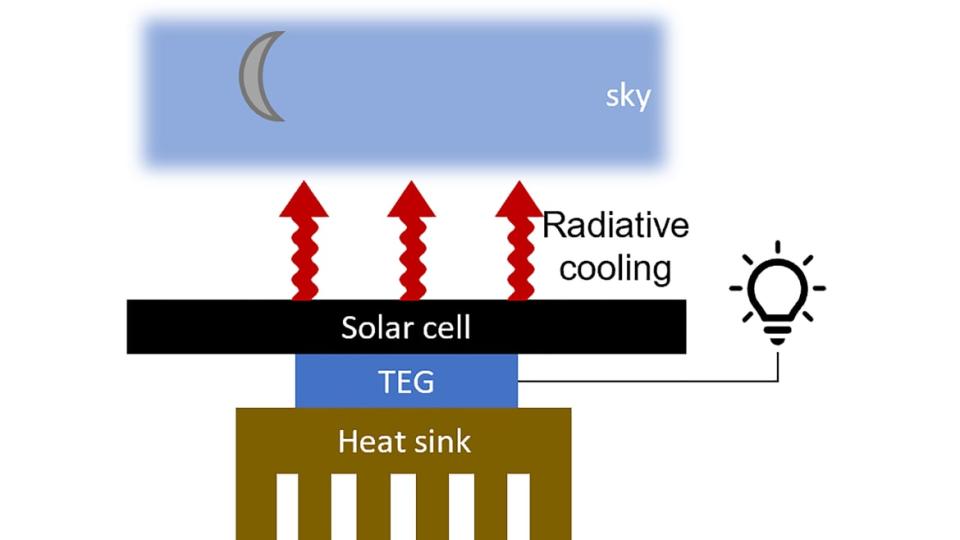These Solar Cells Might Be the Answer to Nighttime Electricity Woes

Any object containing heat—like a plant or building, or a human body—needs a way to cool off. One method of doing that is through radiative cooling, a process where a body or object loses heat by emitting waves of electromagnetic radiation invisible to the human eye. This phenomenon typically occurs at night and cools the planet as the collective heatwaves disappear into the atmosphere and beyond.
As it turns out, radiative cooling may also be our ticket to a nighttime renewable energy source for countless people across the globe.
In a new study published on Tuesday in the journal Applied Physics Letters, researchers at Stanford University created a photovoltaic (PV) cell, which collects and converts solar energy to electricity, that generates a sizable amount of power by soaking up energy emitted by radiative cooling. This new type of PV cell could dramatically extend the lifespan of a solar panel and serve as a reliable source of energy for over 750 million people living without electricity worldwide.
Solar Energy Has a Dust Problem. This Could Solve It.
Capturing thermal radiation is similar to how a hydroelectric dam captures energy from falling water and converts it into storable, usable electricity, Shanhui Fan, an electrical engineer at Stanford University who led the study, told The Daily Beast.
In the case of their modified PV cell, Fan and his team tapped into an unseen reservoir—surrounding air through which thermal radiation is traveling—and attached an insulating material called a thermoelectric module. This material acts like a hydroelectric dam, taking heat flow and producing energy out of it.
The amount of electricity generated is quite modest—about 50 milliwatts per square meter—and not competitive enough to go up against the hundreds of watts per meter square produced by a conventional solar panel. However, it’s still a remarkable feat for a prototype, Peter Bermel, an electrical engineer at Purdue University who was not involved in the study, told The Daily Beast in an email.

The device generates electricity at night from the temperature difference between the solar cell and its surroundings.
But electrical modesty is what Fan and his team are banking on.
“What [this PV cell] could be useful for is to provide you with a convenient light source, things like lighting up LEDs and charging cellphones or sensors, that kind of stuff,” he said.
Another added bonus is that the energy collected from radiative cooling can boost a PV cell’s efficiency during the day, Fan and his team discovered.
“During the daytime, when you use a solar panel, [the thermoelectric module] augmented the power generation of solar cells,” Fan said.
The researchers do have some hurdles up ahead in making their new PV cell more energy efficient and cost-effective. But Fan is hopeful that one day his team’s device could offer a source of electricity for people in developing countries and anywhere else reliable energy, especially at night, is hard to come by.
Got a tip? Send it to The Daily Beast here
Get the Daily Beast's biggest scoops and scandals delivered right to your inbox. Sign up now.
Stay informed and gain unlimited access to the Daily Beast's unmatched reporting. Subscribe now.

